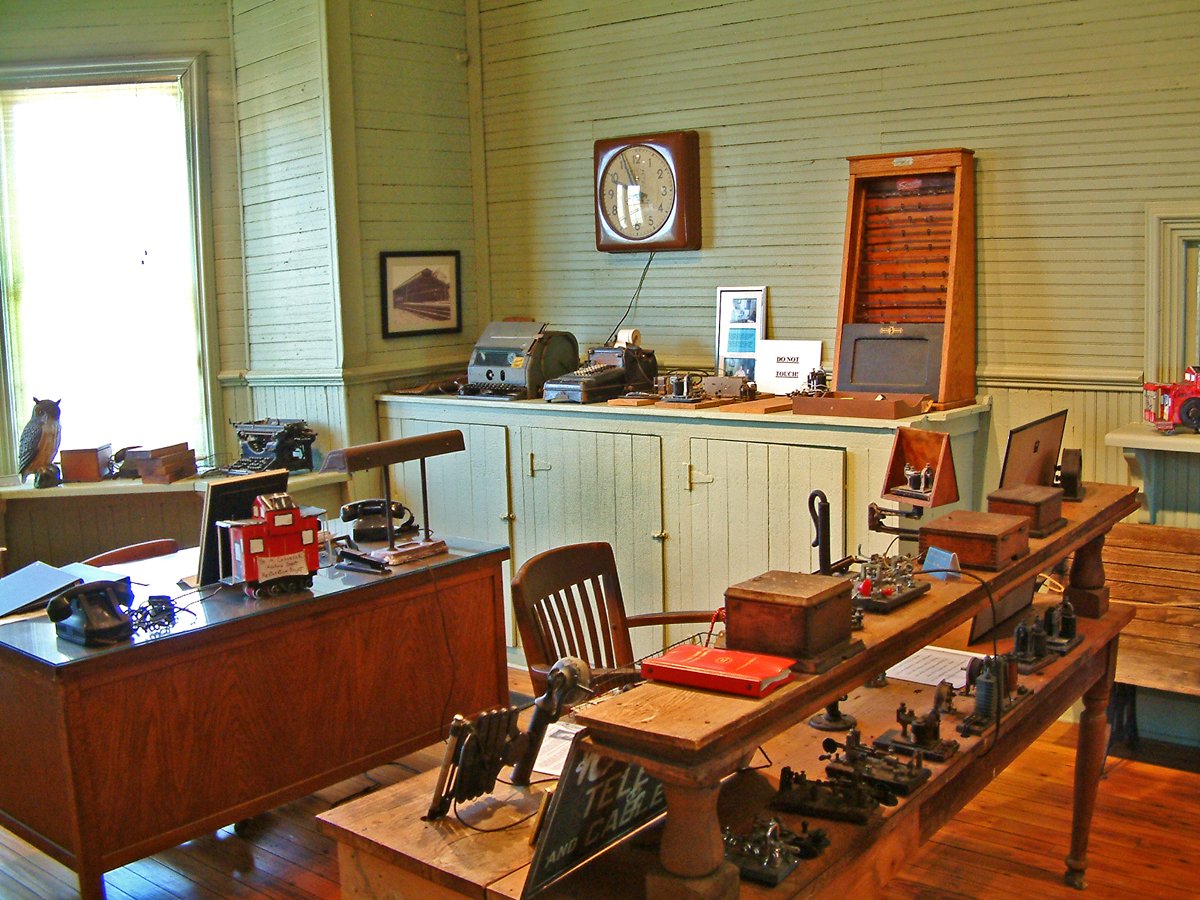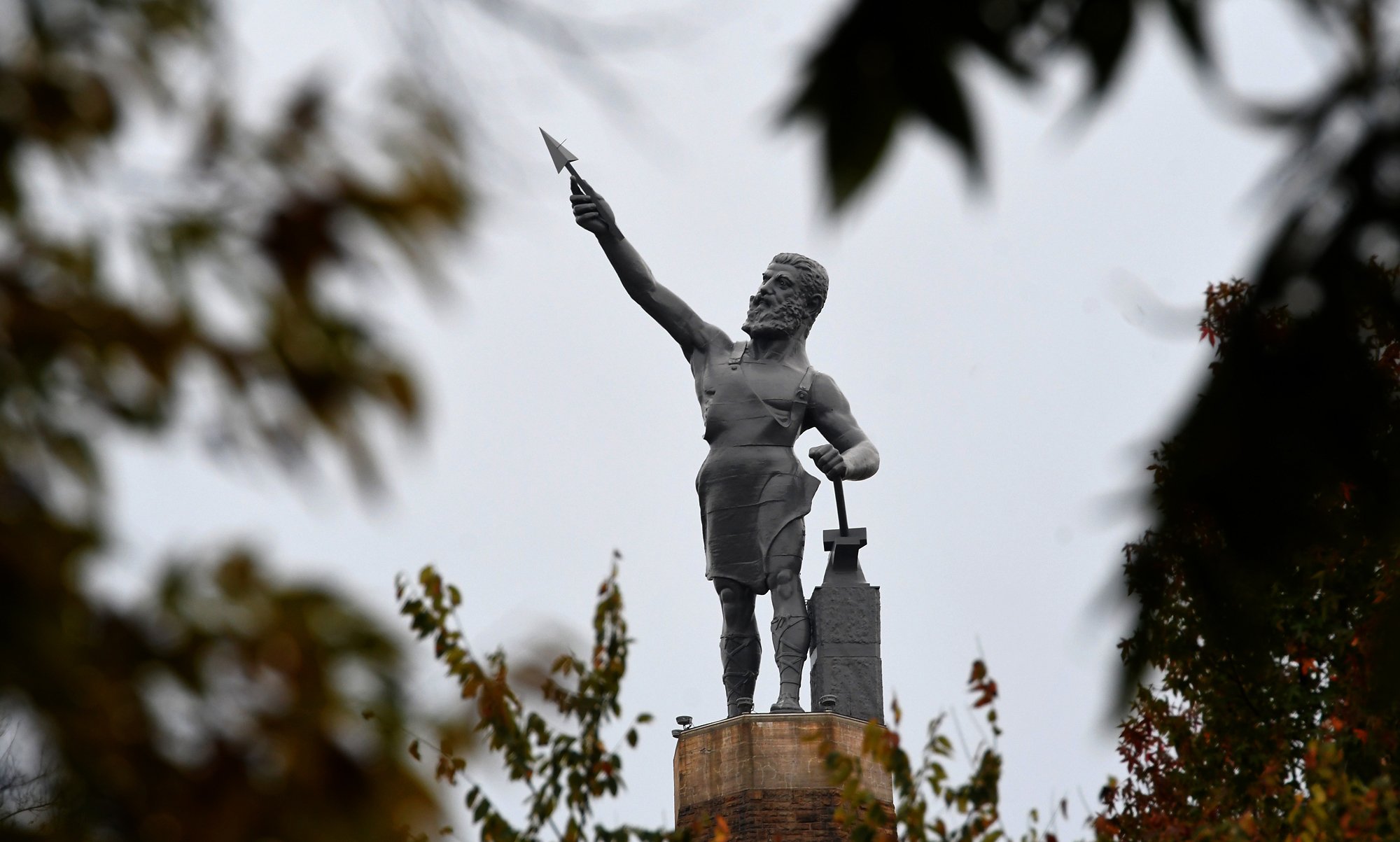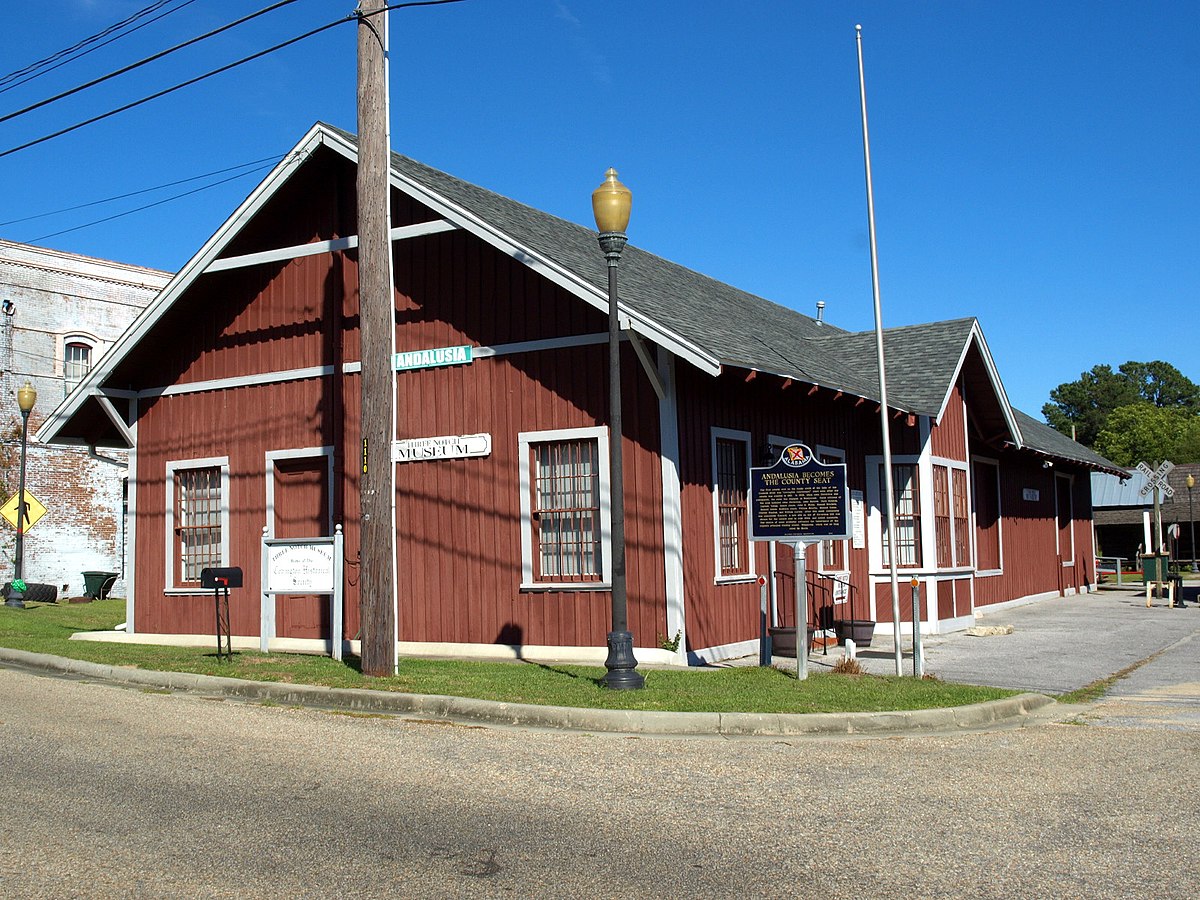The Pioneer Museum of Alabama
The Pioneer Museum of Alabama sets on of over 40 acres of a beautiful natural landscaped campus that includes certified wetlands, and the gorgeous Conecuh River runs alongside its scenic boardwalk.
There are numerous shady and very relaxing trails that will offer you and your family one of the best of days you have ever spent.
These trails let you enjoy the natural heritage of the area while enjoying the historical structures, numerous artifacts, as well as the overall cultural experience.
There is also a program that includes a guided tour of the main museum building and its prehistoric Native American artifacts, the demonstration cabin, as well as the other cabins and structures that set on this beautiful site.
The History of the Pioneer Museum of Alabama
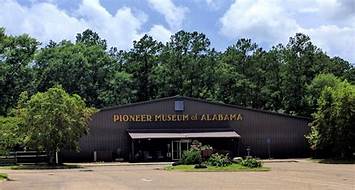 Pioneer Museum of Alabama
Pioneer Museum of AlabamaThe Pioneer Museum of Alabama is located in Pike County, in the town of Troy.
It teaches about the daily life of the non-Indian settlers of the State in the 18th and 19th centuries, and the overall development of the south.
This museum features 22 structures and historic objects that it helps to inter-twine into the life of the early people of Alabama with its visitors.
It also features over 25,000 artifacts and is considered to be one of the largest repositories of historic agricultural items in the state.
Most all of these artifacts are from the 19th century and help tell the story of farming life of the State’s farmers of that historic era.
In the late 1960’s a Troy University teacher and plant manager, Curren Farmer, formulated the idea for the Pioneer Alabama Museum of Alabama.
This idea included ways to save the old farm equipment the early pioneers used, so the future generations could learn how their ancestor’s lived.
He developed his idea with the help of his wife, Margaret Farmer, who was both a historian and an author.
With the help of several of their friends, they reached out and petitioned the nearby community of Troy and its surrounding area, to donate both old farm equipment as well as land big enough to exhibit it on.
In the year 1969 the Farmers helped to establish the Pike Pioneer Museum, and they continued to accept donations.
These donations included various agricultural artifacts that included tractors, plows, as well as numerous other old farming implements.
It was during this same time frame that the Gibson family from the area donated the land the Museum sets on today, and in 1971, the Pioneer Museum of Alabama was opened to the public.
The Growth of the Pioneer Museum of Alabama
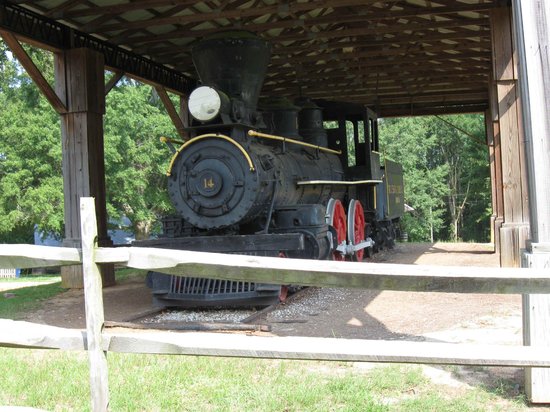 Locomotive at the Pioneer Museum of Alabama
Locomotive at the Pioneer Museum of AlabamaThe Pioneer Museum of Alabama continued to grow, as the first log cabin was moved onto the grounds, which expanded its focus to include the life of a daily pioneer in the early part of the State’s growth.
The Farmer’s continued to direct this historic site, and during those growth years, they played very important roles in helping to develop its mission to teach others about these early years.
In the early 1990’s, a board of directors was established and approved a name for this site, to reflect its expansion that included several structures that were not from Pike County.
The board, along with the Farmer’s, chose instead to focus on interpretation that would encompass the 19th century Alabama pioneer life more overall, and because of this, decided to change its name to the Pioneer Museum of Alabama.
The most notable structures of this historic site are its two cabins: the Dogtrot House, the two-house cabin, and the one room Tenant House.
The main Gallery of the Museum contains four thematic exhibition halls that focus on four key factors centered on the 19th century.
These include historic farm equipment, textile arts, material culture, and the southeastern Native American tribes.
The hall also showcases the State’s involvement in the Civil War and World War I, as well as life in the Victorian-era of Troy Alabama.
There is a re-created farmstead that exhibits rare copper turpentine still, a sugar-cane processing mill, and well as chicken coops from the early period in the State.
The site also features a functioning nineteenth-century locomotive that highlights the effect of the steam engine agriculture on early Alabama.
There is also a stereoscope that was designed by Oliver Wendall Holmes in the1840’s, which provided some of the first three-dimensional images.
These three-dimensional images were key to the later development of photography and the fine arts.
The site also has a horse-drawn jail and a “moon tree”, that was grown from 500 seeds carried into space on the Apollo 14 mission in 1971.
After the space flights, they were then raised and planted all over the United States in 1976. as part of the national bicentennial.
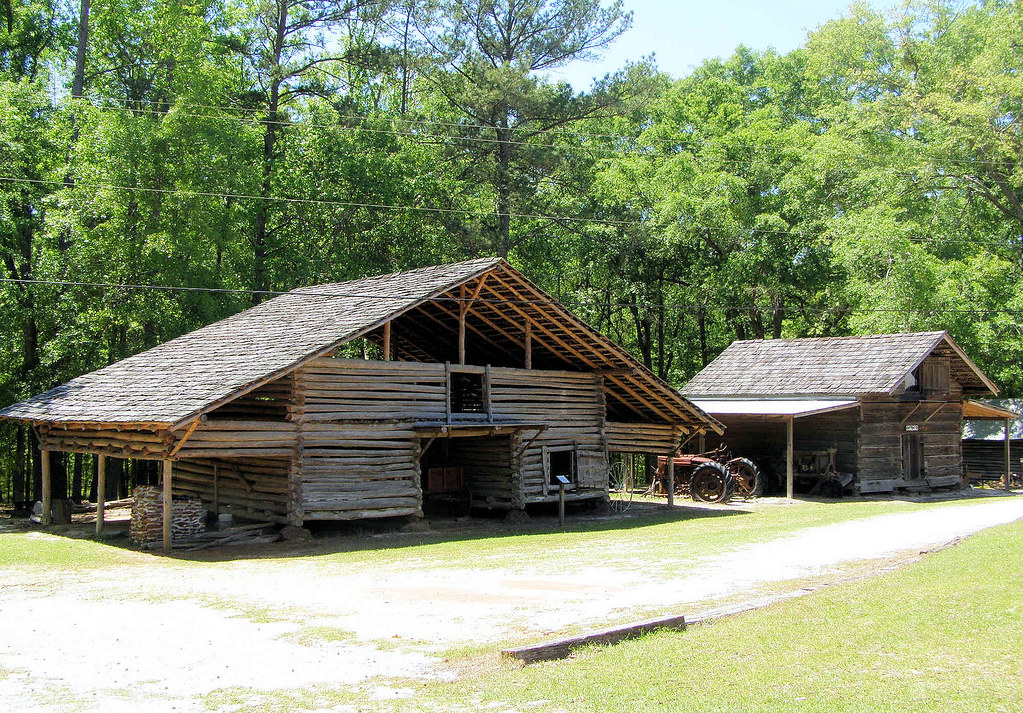 Old Farmstead
Old FarmsteadThe Main Structures at the Alabama Pioneer Museum
- The Dogtrot Cabin
- Split Rail Fence
- The Tenant House
The Dogtrot Cabin
The Dog Trot Cabin in the first of the historic structures at the Pioneer Museum of Alabama and was built by Thomas Madison in Pike County around the year 1830 and contains a split log stricture.
This “dog trot” style cabin housed numerous families before it was moved to the museum in 1972.
The architecture of this style cabin was built specifically for the long hit days in this historic state and had a hall that separated the two rooms.
The hall helped to function as a natural air-conditioner by providing a much-needed draft to the residents.
This hall was how this type of cabin became known as a “dog-trot”, as in the winter it also allowed the family’s dogs to remain inside, and out of the rain and snow.
In the summertime, it also provided them with the shade they needed to remain cool.
Because the center dogtrot is covered, the wide center hall was also an ideal place for the residents to sit in during the evening.
It was also a much-needed area to store firewood and water out of the elements.
Because there were no doors attached to these structures, it made it very easy to haul fresh water to a nearby water barrel that would set inside the passageway near the entry of the kitchen area.
Split Rail Fence
The Split Fence is the next structure at the Pioneer Museum of Alabama, and it holds a very important place in the history of the State.
Because it was much easier for the pioneers to gather logs that were cut from trees that had been cleared from the land for growth, the split rail became by far and away the most common type of pioneer fence.
These types of fences had many benefits over other kind of fences for several key reasons.
First, they could be built on hard ground, they could be erected with only a few tools, and they had a very simple construction.
Second, they required no nails, which were not only expensive to early pioneers, but also extremely hard to find.
Because of these simple facts, they were most popular type of fence not only in Alabama, but across the South.
The Tenant House
The third main structure at the Pioneer Museum of Alabama is the Tenant House.
Farm tenancy in the South during the 19th century, was a form of lease agreement where a tenant rents, either for cash or a share of their crops, farm property from a landowner.
There were different types of lease arrangements, the most common being sharecropping, where a landowner provides all of the capital, and the tenant would provide all of the labor, for a 50% share of their crops.
The growth of the State’s tenant farming reflected a national trend at the time, and in the late 1800’s, over 25% of all American farmers operated under this agreement.
These tenants would often travel where the work was located and moved on an average of once every 3 years.
This type of house was typical of tenant architecture, and they were very small and quaint.
There was only one 15x16 square foot room that served as a kitchen, living room, dining room, as well as a bedroom for an entire family, no matter what the size.
The roof was originally covered in wood shingles and the walls were papered with newspapers from the times, some of which dated all the way back to the Spanish American War.
Cardboard was also used on the walls, to act as insulation to keep it cool in the summer and warm in the winter.
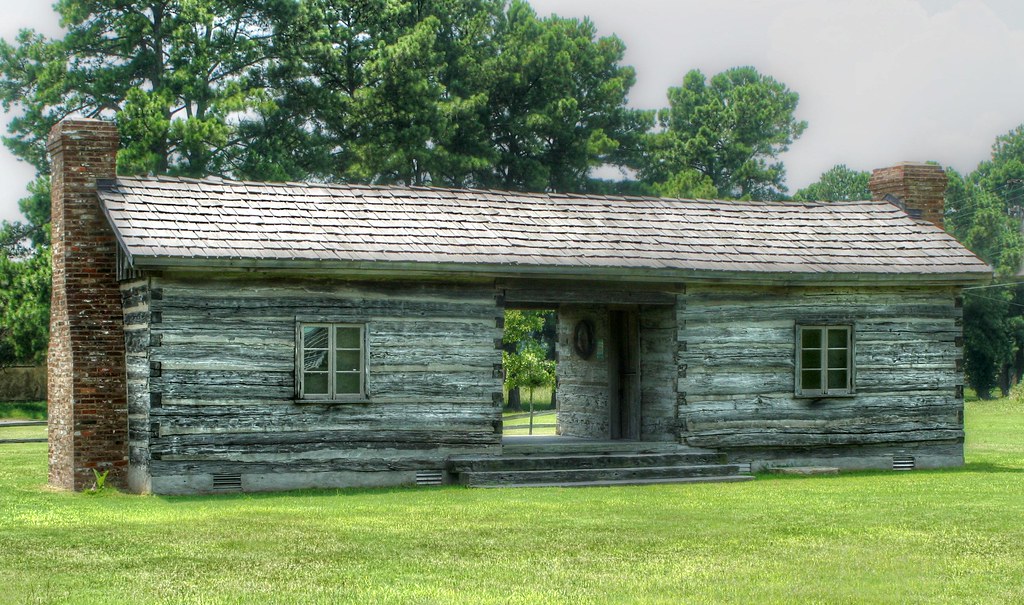 Dogtrot Cabin
Dogtrot CabinEvents at the Pioneer Museum of Alabama
There are several events at held annually at the Pioneer Museum of Alabama, and they include the following.
- Spring Planting Day
- Pioneer Days
- Old Time Christmas
Spring Planting Day is better known as “Spring Plantin” and is a celebration of new beginnings and old ways.
Visitors can enjoy the Museum’s grounds as they begin to come to life in the spring, and the annual Spring Festive highlights agriculture, planting, historical trades and goods, and a lot of good old-fashioned fun for you and your family.
Pioneer Days are generally held the first week of October, and at this time, the museum and its grounds come alive with activities.
These include numerous demonstrations of the 19th century chores of the early Pioneers which include woodworking, blacksmithing, ropemaking, spinning, as well as quilting.
There are also Wild West Shows for you and your family to enjoy, Civil War reenactments, as well as storytellers with tales such as the “Legend of Davy Crockett”.
Old Time Christmas, held in the early days of December, is a tradition filled event that features colorful holiday decorations, Christmas music, Santa Claus, and lots of different holiday fun.
If you and your family have never been to the Pioneer Museum of Alabama, you are missing one of the best of the Alabama Backroads Day trips.
References
https://www.pioneer-museum.org/

Alabama Gift Store
Numerous Items for You and Your Family to Enjoy
See it here at the Gift Store
Copyright 2019-2023 Alabamabackroads.com
All Rights Reserved
